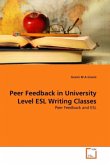Because educational data typically have ICCs ranging from 0.1 to 0.2, we focus our discussions about adequate sample sizes under ICC = 0.15 as a representative condition. This study discusses ranges of sample sizes that are inadequate or adequate for statistical power, relative bias, and accuracy of individual parameter estimates. Unlike previous studies that dogmatize minimum sample size requirement for various purposes, the current study, with more detailed simulation designs for small sample sizes and ICCs, provides numerous options of adequate sample sizes under various ICC conditions. By providing these options and well- documented simulation results, this study emphasizes that adequate sample sizes at either level 1 or level 2 can be adjusted according to different interests in parameter estimates, different expectation of statistical power, and different ranges of tolerable bias and accuracy. This will assist researchers in making better decisions for selecting adequate sample sizes in HLM analysis.
Bitte wählen Sie Ihr Anliegen aus.
Rechnungen
Retourenschein anfordern
Bestellstatus
Storno








